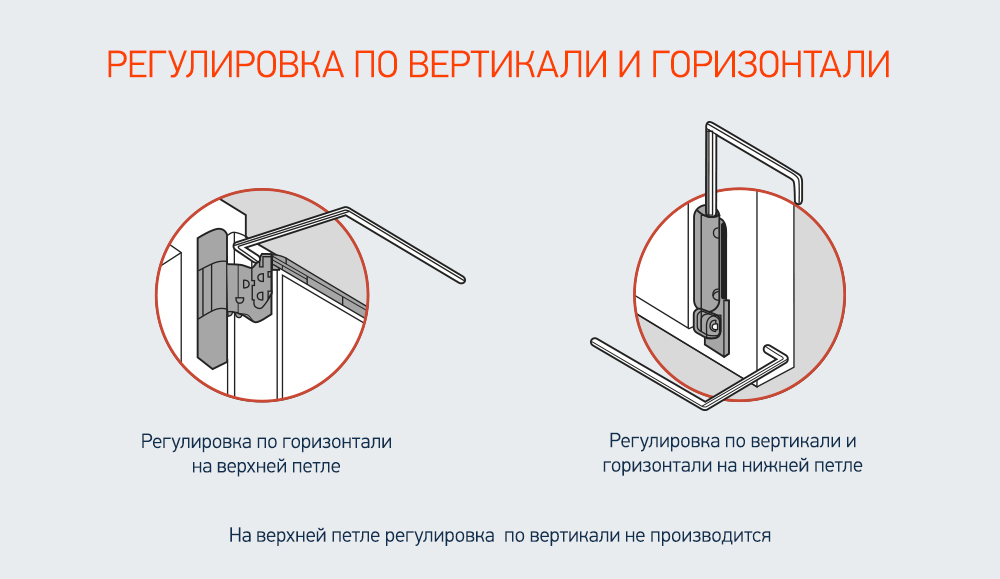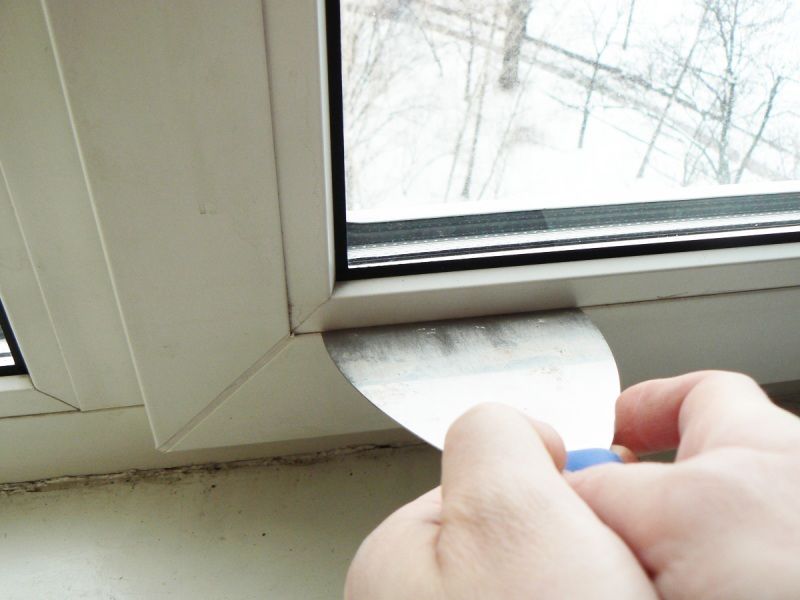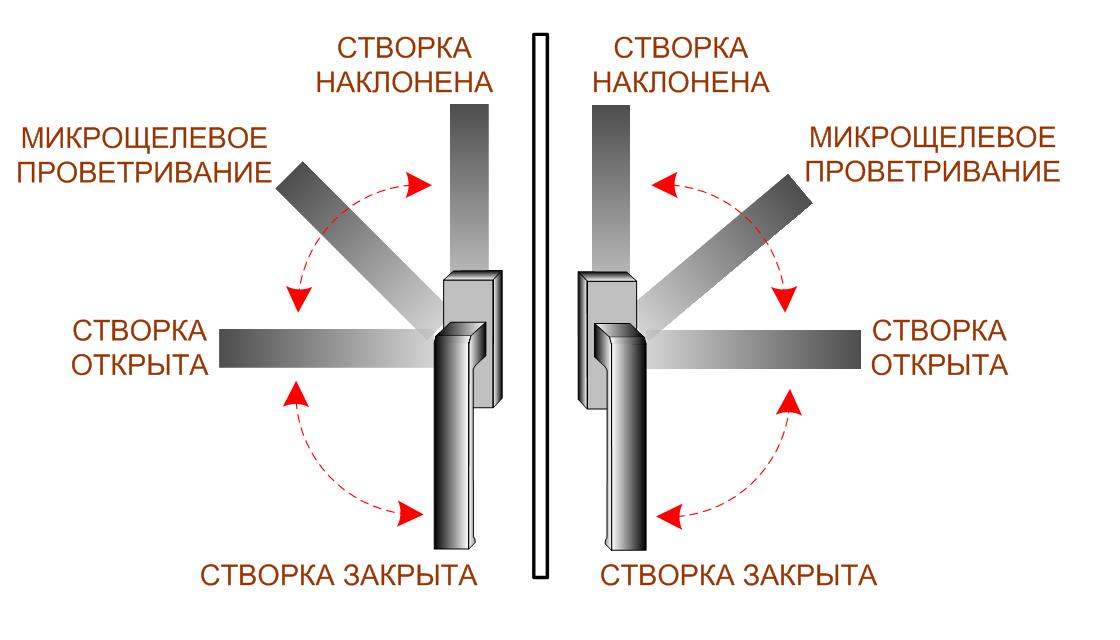Preparation and adjustment of plastic windows for winter
Many users think that with the installation of plastic windows all problems will end, but this is not entirely true. Of course, high-quality plastic windows have many advantages, but the more complex the design, the more serious attention and care it requires. Windows need not only to be washed and cleaned, but also to lubricate the mechanisms, to carry out adjustments and readjustments, to change the seal in time. In such situations, it is better to turn to experienced professionals.

Reasons for reconfiguring plastic windows
Despite all the possibilities of modern window fittings, it is important to weigh the feasibility of reconfiguring. On the one hand, adjusting the plastic window from summer to winter reduces heat loss and helps to ensure favorable temperature conditions. On the other hand, it contributes to the rapid wear of the seal and its replacement, and this requires additional financial costs. Therefore, the need to reconfigure seasonal modes is a decision that each user will have to make independently, based on personal thoughts and preferences.

Manufacturers recommend using the summer mode all year round, however, if there is noise, draft or blowing, especially from the side of the sash, it is better to install a winter one.
In the first year of operation, the window works optimally, so it is advised not to change it. The transition must be made once every six months, the duration of the winter regime should be shorter than the summer one. Their constant change can lead to rapid wear of the seal.

It is especially undesirable to operate the window in winter mode during the summer period due to the increase in the trunnion pressure. In summer mode, the seal will last twice as long. High humidity and low temperatures also have a devastating effect on the quality of the seal.

What hexagon is needed for adjustment
The easiest way is to purchase such a key in a furniture accessories store - its cost is scanty, and there are a lot of benefits from it. The hexagon is used more often for assembling furniture, hence the name "furniture", which has a size of 4 mm.

You will also need a screwdriver with a set of bits, it is better to use cruciforms with T and TX markings. Be sure to need a simple curly screwdriver 3x4 mm and pliers. For the lubrication of mechanisms, WD-40 or oil used to lubricate sewing machines is suitable.
Modes of plastic windows (how to set up winter and summer + eccentric adjustment)
Adjustment of plastic windows winter-summer is possible only with more modern fittings.
To understand whether a transition is possible, you need to look at the window sashes on the sides, top and bottom, pay attention to the presence of fittings, especially a trunnion or an eccentric. This element is located on the side of the sash and makes it possible to regulate the degree of its pressing against the window frame.

If the trunnion is oval or has holes in the form of a hexagon or an asterisk, then this hardware provides that the window can be adjusted in different seasonal modes.
Today, setting up fittings is not an exception, but a rule, the observance of which will extend the service life.

In order to determine in which mode the window is configured, it is enough to take a regular sheet of paper and place it between the frame and the window sash. In the winter mode, the paper does not stretch or tear, and in the summer mode, it comes out easily and without difficulty.
If the trunnion is round and there are (an asterisk, a dot or a dash) on it, then the direction of the dash towards the room will indicate the winter mode, the streets - summer.

In the presence of an oval trunnion, a different adjustment scheme follows:
- when installed in a vertical position, a weak clamping of the frame to the window sash is provided, which confirms the setting of the summer mode;
- the horizontal position of the trunnion and strong pressure correspond to the winter mode.
Adjusting plastic windows on your own is quite simple, the main thing is not to overdo it, otherwise the fittings may fail and then the window will need to be repaired.

Mode adjustment instruction:
- It is necessary to find all the pins (eccentric mechanisms) that can be located: from the side of the handle - there can be three of them, it all depends on the size of the sash; from the side on which the hinges are located - one at a time; above and below the sash - one at a time.
- When tuning, the position of all pins must be changed.
- It is necessary to prepare, wipe and clean all the elements of the window, and especially carefully the fittings. Better to remove the old grease and apply a new one.
- Next, find the marks on the round eccentrics and set them in the desired mode, adjust the oval pins by turning them vertically or horizontally. For adjustment, you can use a hex wrench, a star screwdriver or oval trunnion pliers.
- Some manufacturers make the trunnions recessed into the window sash. To adjust, they are first pulled out of the sash, and then turned, setting in the desired position and recessed into the sash again.
- Winter: the dash is directed towards the seal or towards the room - in the presence of a round trunnion, the oval eccentric is installed horizontally.
- Summer: the dash is facing the street, the oval pin is upright.

Reconfiguring seasonal modes does not affect the operation of the ventilation mode - the window opens in the usual usual way, so the absence of a window will not be a problem.

Adjustment
With prolonged operation of plastic windows and doors, there are some points of deterioration in work:
- difficult movement of the sash and the occurrence of a problem when closing;
- the formation of a draft from the side of the sash;
- sash sagging when opening;
- blowing from the side of the upper loop.

Loose hinges are the main cause of these faults. There is a complex of factors that can lead to a similar condition:
- long-term operation and wear of the seal;
- careless closing;
- excessive load on the hinges;
- illiterate installation of the window system;
- shrinkage of the walls of the room.

Loop setting
Adjusting the hinges, as well as cleaning and lubricating the mechanism, will help eliminate the draft and disengagement of the upper hinge. This procedure requires basic knowledge and a set of tools: 4 hex wrench, wide chisel.

Horizontally
If the sash of the window in the lower or middle part touches the frame, then there is a sagging of the sash. You can tighten it by lifting the vertical or one of the horizontal adjusters.

Horizontal adjustment is carried out due to the upper and lower hinges, in the design of which there are special hexagonal holes. The setting is performed when the window is open. When the hexagon is rotated clockwise, the flap is attracted to the hinge, and the opposite bottom corner rises. When adjusted counterclockwise, the sash moves away from the hinge, the opposite upper corner is lowered. The adjustment of the lower hinge occurs both when the window is open and closed from the outside. It is similar to the top setting.

These methods will help eliminate skews and shifts. The adjustment step corresponds to 2 mm.
Vertically
Vertical adjustment can be done with the lower hinge. To do this, you must use the adjusting hexagon located under the cap of the lower hinge. When the key is turned clockwise, the sash will be lifted, and counterclockwise - it will be lowered. The adjustment step is 2 mm.

Sash clamp
Adjustable by adjusting the upper and lower loops. Very often, the upper hinge is disengaged due to improper opening or insufficient contact of the window sash, abruptly tilting from the open position to the ventilation mode or vice versa. To fix the problem, it is necessary to firmly press the sash, pushing it at the top, then move it to the open position. Sometimes the cause of a poor fit can also be a sticking of the locking mechanism of the handle - in this case, repair is necessary.

If a strong draft is felt from the side of the hinges, this may indicate an incorrect installation of the window. In this case, remove the glazing bead from the hinge side and place straightening plates - they can be made from a simple ruler.

In order not to damage the glass unit, it is necessary to ensure that the edges of the straightening plates do not rest against the inside of the glass. A wide chisel will help to remove the glazing bead. To do this, you need to lean the device at the junction of the glazing bead with the profile and disconnect the glazing bead with a dexterous blow.

The main reason for the appearance of a draft is a poor fit of the seal. To make the sash more tightly in contact with the frame, it is worth adjusting the hinge pressure mechanism - this will require a hex wrench.There is a "tongue" on the sash of the window, if you push it more strongly, then the window will be pressed against the frame more firmly. To extend the tongue in left-handed hinges, the hexagon is rotated counterclockwise, with right-handed ones - clockwise.

Depending on the fittings, you can configure both hinges at once or only the upper one. To tighten or loosen the bottom hinge, you will need to remove the cap and rotate the bolt perpendicular to the plane of the window.
Adjustment of the upper hinge pressure is carried out only on the swing-out leaves in ventilation mode. This is the only way to reach the hexagon that regulates the clamping force of the sash from above.

In this situation, it is very important to think about additional fixing of the window, since all the load is redistributed to the lower hinge. Some models are equipped with locks, consisting of a lever or a clip, which lock the sash in the open position and can be folded back only in the closed position. In this case, it will help to press the lock and turn the knob at the same time in the ventilation mode.

PVC Setting Instructions
In addition to the instructions on how to independently adjust the mode of plastic windows in this article, a video will serve.
An important rule for the long-term operation of windows is preventive maintenance and correct periodic adjustment of mechanisms. Once or twice a year, the hinges, clamping and locking mechanisms and the handle should be cleaned and lubricated. To do this, you can use a special or machine oil, which is applied with an oiler or brush.

If the windows face the roadway, where there are very active streams of dust and fumes, the mechanisms require more careful maintenance. Since the rubbing mechanisms wear out, begin to creak, the seals age, and the tightness deteriorates accordingly.
For the lubrication of rubber seals, special products are produced; they are produced in bottles with convenient nozzles. Products in spray cans will help lubricants to penetrate into the most inaccessible places of window mechanisms.

Compliance with certain rules and regular proper care will help to avoid malfunctions and keep the house warm and cozy.
VIDEO: Adjusting plastic windows yourself.





